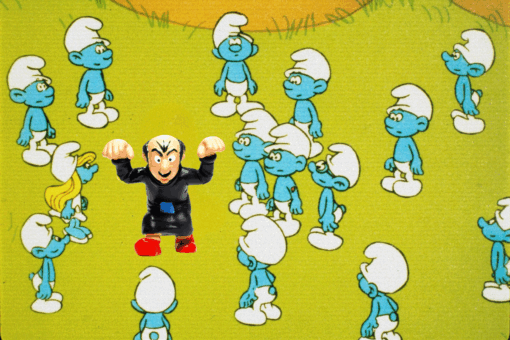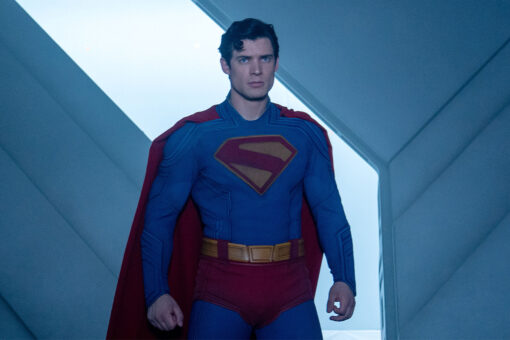Today, when I walk into a room in drag, I am on full display. A diva. The embodiment of an unapologetically authentic individual. All eyes are on me.
But what people don’t see is what it took for me to get to a place where I could allow myself to be my authentic self without any shame or guilt.
At 16, I started “borrowing” my mother’s clothes and jewelry and sneaking out to gay clubs where they had drag shows. I would watch in awe as these stunning, gender-defying performers broke every rule I had been taught about gender roles, and it awakened something inside of me. I wanted to be like them. The bullied child who lived within me felt an overwhelming sense of empowerment and freedom watching the way these performers took over the stage.
I had come out as gay a year earlier, just after my parents divorced and I moved with my mother and brother from London, where I was born, to Los Angeles. But something still wasn’t complete.
When my parents arrived in the UK, they were two Jewish Iranians fresh off the boat from a world where queerness was not something which could possibly be part of their reality. Iranian Jewish culture is very traditional, very conservative and very straight. It has very rigid gender roles in place.
A year later they had me, and I practically popped out of the womb with a Barbie doll in one hand and a Gucci purse in the other.
In London, I attended an Orthodox Jewish school where I stood out in every way imaginable: I was a secular Mizrahi kid in a religious Ashkenazi environment, my parents were foreign and I loved “girly” things. I was bullied relentlessly.
Being true to myself in school and with my family was a struggle. When I was 6, my parents placed me in therapy, pretty much because I liked to play with Barbie dolls. I went to therapy until I was 11. It didn’t work — not because therapy doesn’t work, but because there was no reason for me to be there. I didn’t have a problem; everybody around me had a problem. I know that now, but at the time I couldn’t understand why everything about me was so different.
I took solace in letting my imagination run free, to a world where I fantasized about being like any number of the strong, glamorous, beautiful and comedic women I watched onscreen. Madonna, Joan Collins, Marylin Monroe, Mrs. Slocumbe — from the British sitcom “Are You Being Served?” — Shirley Bassey, Miss Piggy. All of them became etched into my pre-adolescent mind, and nobody knew which one of them 7-year-old me was going to imitate at any given Shabbat dinner. (I have no idea why everyone was so surprised when I came out!)
In LA, and much to my mother’s chagrin, I found a clique at my public school which consisted of artists, punk rockers, hippies and weirdos — which was great because I was a weirdo, too. They weren’t my kind of weird but they were weird nonetheless. Most importantly, they accepted me. It was through that acceptance that I was able to come to terms with who I was, and came out as gay. But it was drag that allowed me to escape the queerphobic world I lived in and live out the very fantasies I had as a child.
Discovering drag as a teenager was one of the most profound things that happened to me.
Coming out in the ‘90s at age 15 was an ordeal for my family and for my community. Our family’s oberu — a concept in Iranian culture which loosely translates to reputation, in which any one person’s reputation reflects on the immediate family, extended family and the broader community — was on the line.
When it was discovered that I was doing drag, an emergency family intervention was called. I was instructed to hide who I was, focus on my education, and marry a woman. Once again, I was taken to psychologists and medicated. At one point, I was even taken to a doctor from the Persian-Jewish community who told my mother being gay was due to hormonal imbalances. The doctor put me on a round of testosterone therapy for 3 months — a humiliating and demeaning ordeal.
I had finally found solace and safety in the queer and drag community, but for the sake of self-preservation, I decided to put the drag away. I knew I couldn’t change my sexual orientation, but I thought I could at least hide my femininity. I was surrounded by the idea that there was something wrong with me, that I am fundamentally flawed, and it fed continuously into my psyche. If I was going to be gay, I decided, I was going to be an acceptable, respectable version of gay.
In 2001 my mother was diagnosed with ALS. I’d spent the previous five years losing my identity to fit into who she wanted me to be, or at least meet her halfway, and I would spend the next five years centering my identity around her illness and my caregiving, attending to her needs as her health slowly and agonizingly deteriorated.
When my mother passed away in 2006, I was completely lost, hurt, depressed and angry. I didn’t know who I was or what I wanted to do with my life. I set out on a journey of healing and rediscovery. I went to a therapist (who I chose for myself). I got that nose job I always wanted (my mom wouldn’t allow me to get one because “men don’t do that”). I enrolled in acting school and worked in various professional fields. But it still felt like something was missing, as if I was still trying to fit some ingrained ideal of someone I should be.
While trying stand-up comedy, I created a ridiculous character who was an Iranian Jewish housewife. When I performed as her, I got a response I’d never experienced before. I played this character on various shows and in several video projects over the next few years. There was a degree of comfort, hiding behind the facade of comedy — I could pretend this wasn’t me, just a character I play. But I liked being pretty and glamorous. Eventually, once I was able to admit that to myself, I realized I had to make a choice. Could I be authentic to all of who I am, or would I continue dancing around the periphery of my identity?
I decided I wasn’t going to let anyone or anything stop me from living my life exactly as I saw fit. Where once I felt my identities conflicted with one another, now I chose to lean into my Persianness, my Jewishness and my queerness.
I became involved with JQ International, an LA-based organization which supports LGBTQ+ Jews, and worked closely with their Persian Pride Fellowship. I befriended other queer Jews and Iranians. Slowly, I began to see I didn’t need to reject my Iranian identity and my Jewish identity in order to be authentic to my queer identity.
I traveled back to Israel, and, for the first time, went out in Tel Aviv in drag. It was an experience which I will never forget — not only because it was the most fun I’ve ever had, but because I felt so completely accepted, adored and celebrated. The experience solidified the unity of my queer and Jewish identity, and I finally felt whole.
Drag is all about breaking down societal constructs and going against the dominant narrative of what is considered acceptable. It forces one to examine who they are, ironically through putting on a costume and makeup. It’s about freedom from society’s constructs, liberation and fierce loyalty to your authentic self.
I can now say that all the things which made me so different as a child are my biggest strengths as an adult. The trauma and hardships stay with me to this day, but they have made me the person I am — and I’m incredibly proud of who I am today.
To the individual who needs to hear this: Please don’t hide yourself for two decades, like I once did. You are who you are, and you deserve to be seen, heard, accepted and celebrated. Embrace your authentic self, and find communities and groups who can help support and empower you in your journey to share your uniqueness and your love.
As Jews, we know all too well what it means to be marginalized and vilified. We have an extensive history of antisemitism and being othered. As such, it is incumbent upon us to ensure that those among us who are struggling with their identity are not only accepted, but loved for who they are. This means thinking about what posts we like on social media and how we discuss issues about LGBTQ+ youth at family gatherings. I promise you, the young people who see and hear you are paying attention, and what you do and say can be the difference between life and death for them.
Queer people are here. We have always been here, and we always will be. Please don’t try to erase us or make us feel like we need to erase ourselves.



